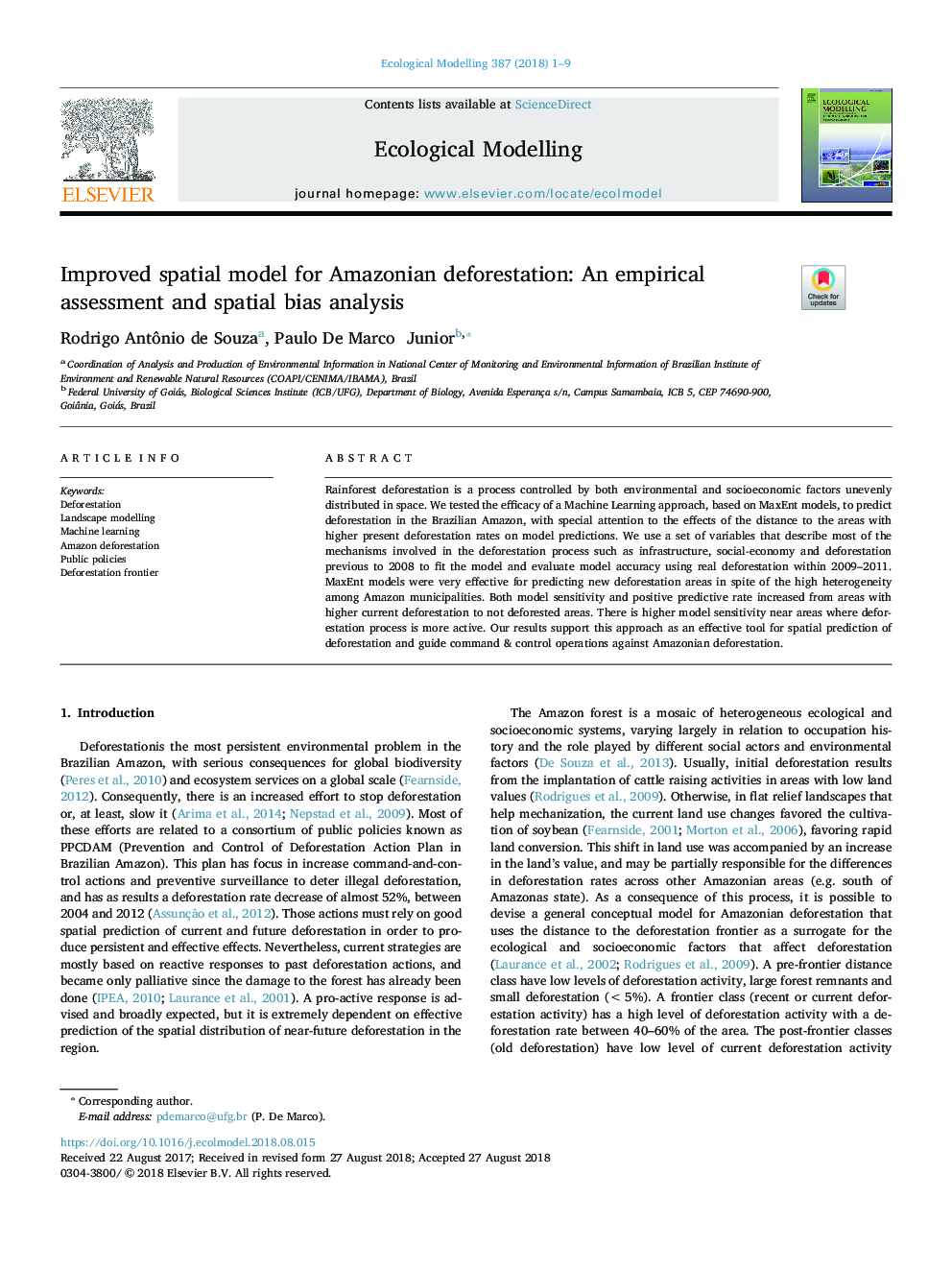| Article ID | Journal | Published Year | Pages | File Type |
|---|---|---|---|---|
| 8965881 | Ecological Modelling | 2018 | 9 Pages |
Abstract
Rainforest deforestation is a process controlled by both environmental and socioeconomic factors unevenly distributed in space. We tested the efficacy of a Machine Learning approach, based on MaxEnt models, to predict deforestation in the Brazilian Amazon, with special attention to the effects of the distance to the areas with higher present deforestation rates on model predictions. We use a set of variables that describe most of the mechanisms involved in the deforestation process such as infrastructure, social-economy and deforestation previous to 2008 to fit the model and evaluate model accuracy using real deforestation within 2009-2011. MaxEnt models were very effective for predicting new deforestation areas in spite of the high heterogeneity among Amazon municipalities. Both model sensitivity and positive predictive rate increased from areas with higher current deforestation to not deforested areas. There is higher model sensitivity near areas where deforestation process is more active. Our results support this approach as an effective tool for spatial prediction of deforestation and guide command & control operations against Amazonian deforestation.
Related Topics
Life Sciences
Agricultural and Biological Sciences
Ecology, Evolution, Behavior and Systematics
Authors
Rodrigo Antônio de Souza, Paulo Junior,
